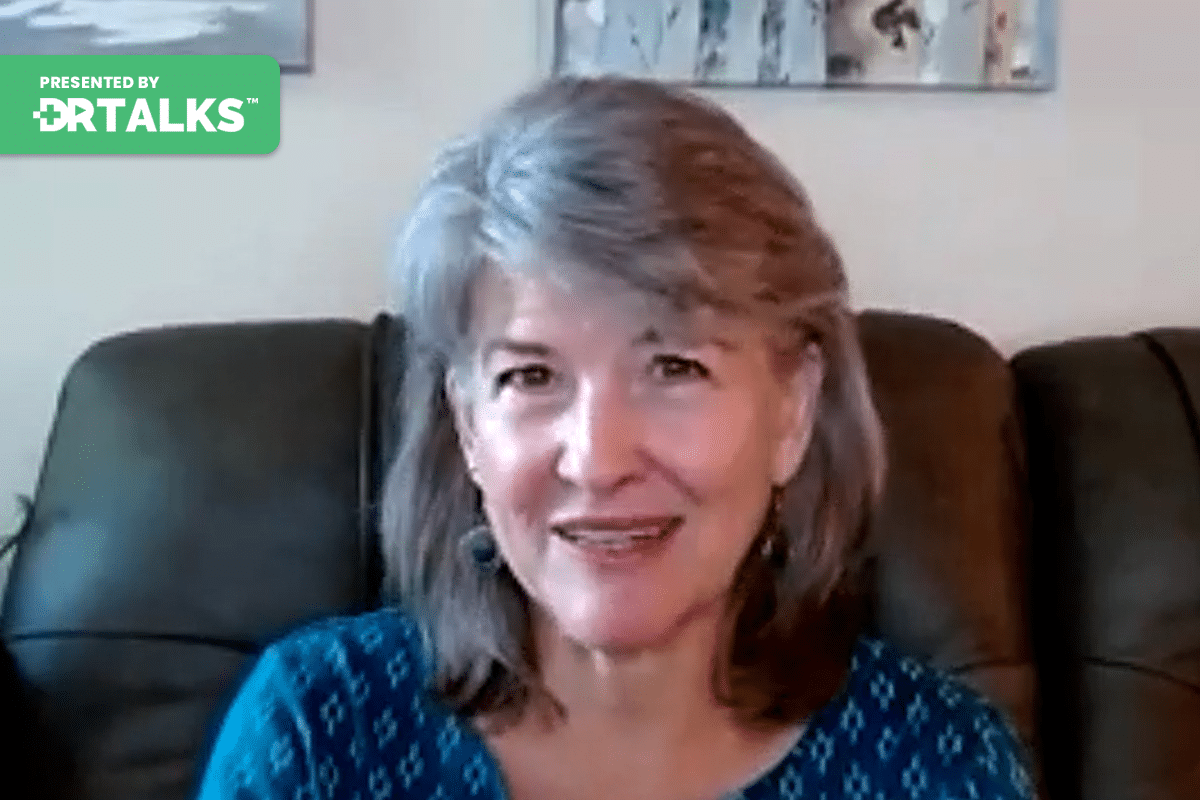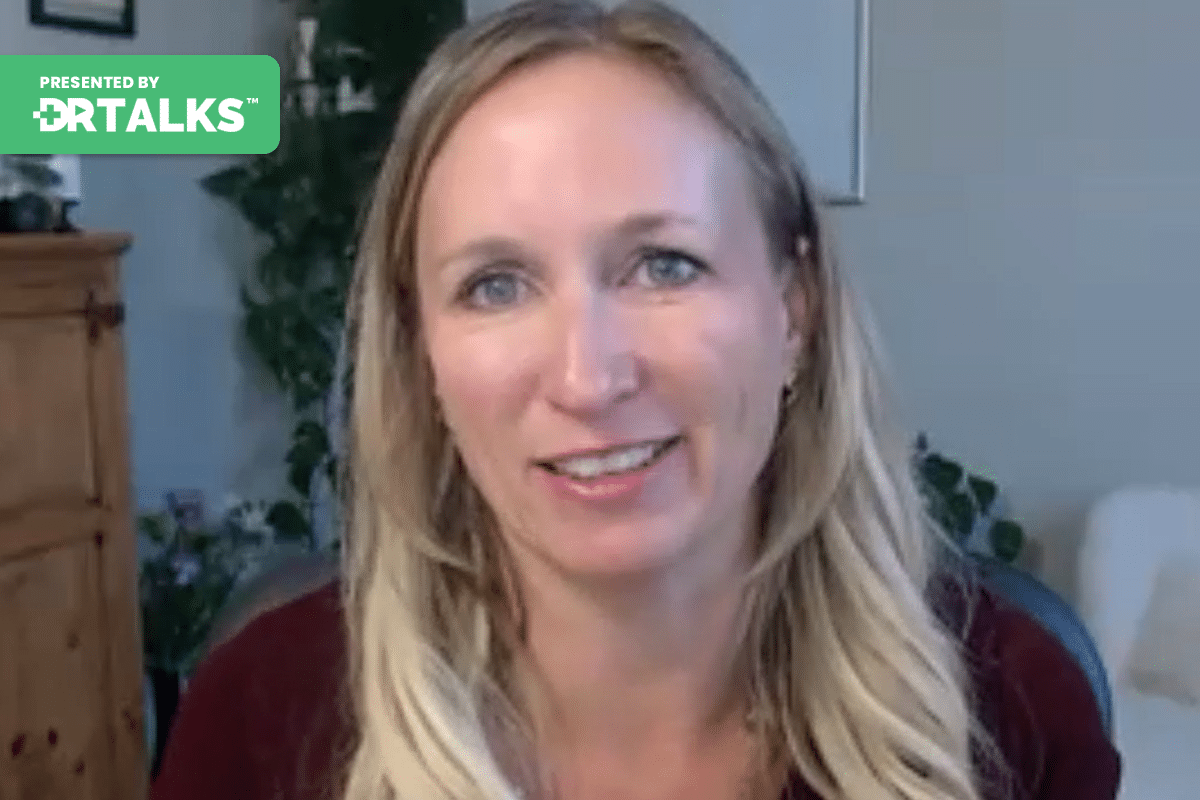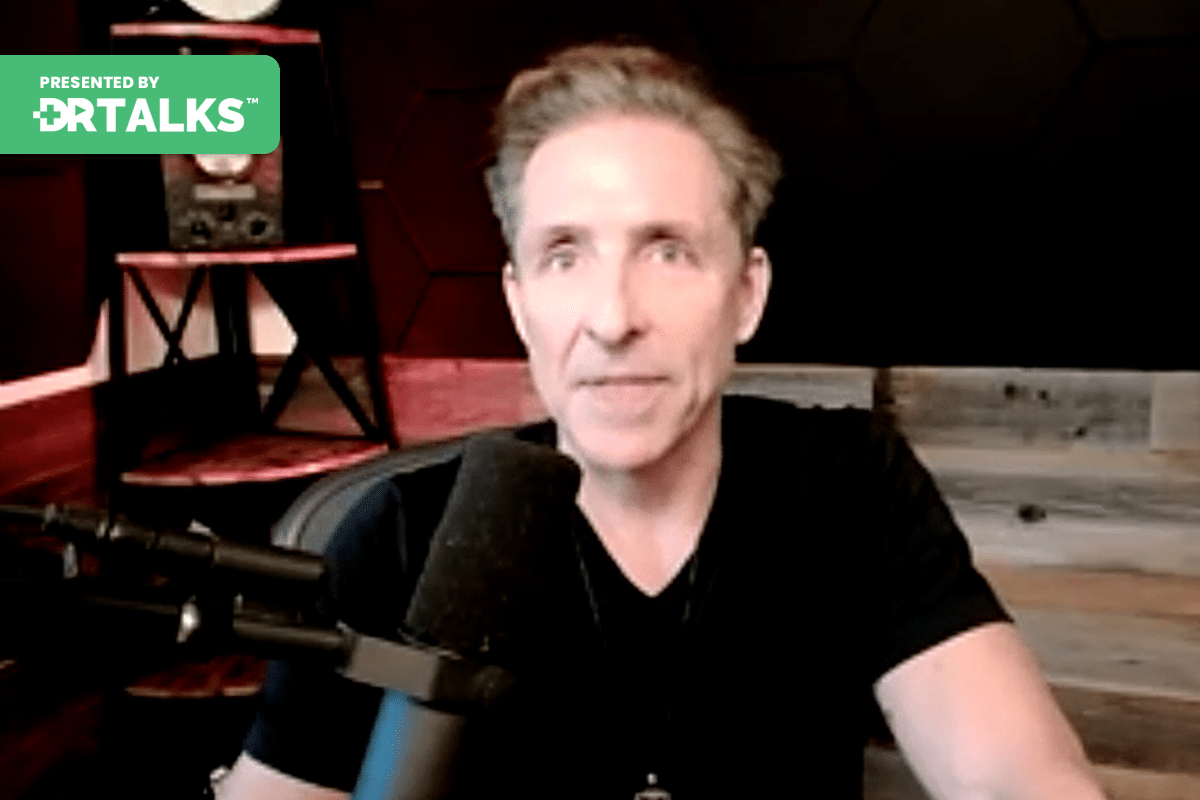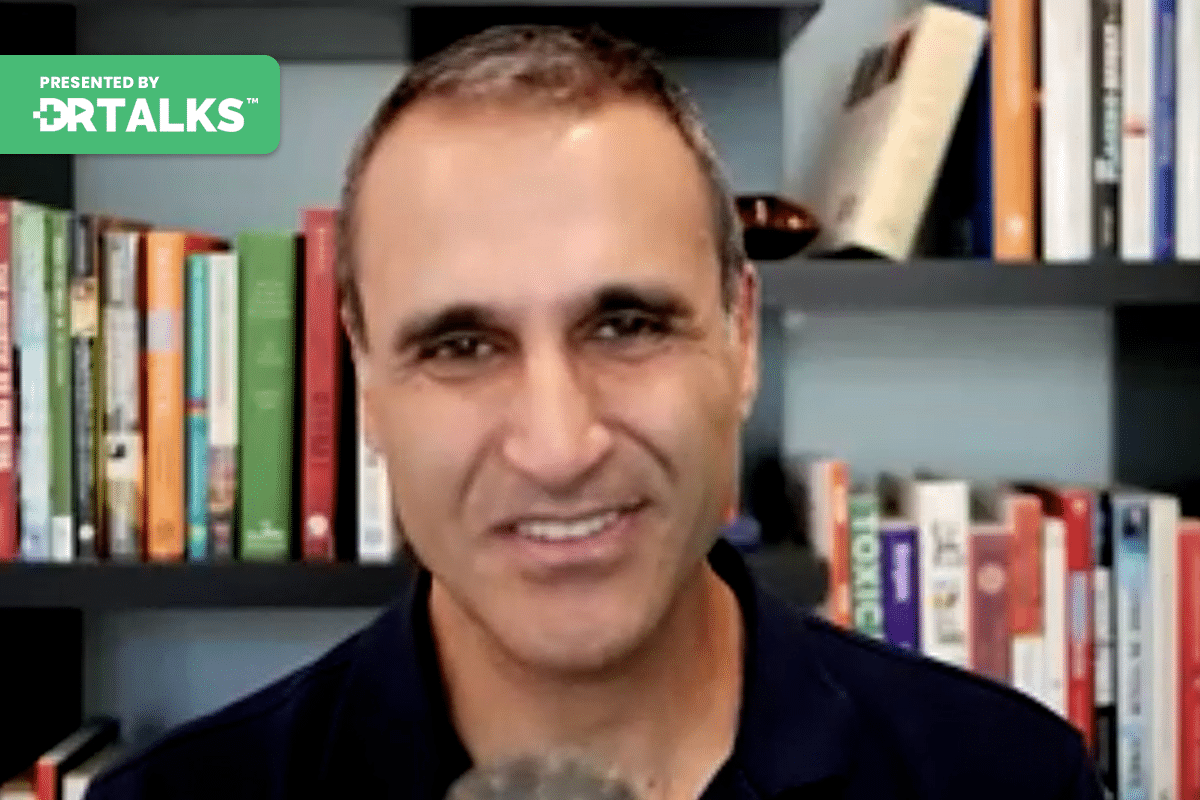Join the discussion below

Dr. Ann Shippy is Board Certified in Internal Medicine and Certified in Functional Medicine. She operates a successful private practice in Austin, TX where she is known for her compassionate, attentive, and tireless approach to caring for her patients. She has gained a considerable reputation for successfully diagnosing and treating... Read More

Dr. Whitfield is an experienced, Board Certified Plastic Surgeon. He completed six years of surgical training at Indiana University Medical Center. He remained at the Indiana University Medical Center to complete his Plastic Surgery Residency. At the completion of his Plastic Surgery Residency he chose to gain additional training in... Read More
- Dive deep into the concept of Breast Implant Illness, understanding its intricacies and potential health implications
- Learn about the frequent occurrence of high mold levels in women with Breast Implant Illness and its potential effects
- Discover the detox programs and inflammation-reducing supplements designed specifically for patients with Breast Implant Illness
- This video is part of the Mold, Mycotoxin, and Chronic Illness Summit
Related Topics
Antioxidant Pathways, Autoimmune Response, Bacterial Vaginosis, Brain Fog, Capsular Contracture, Cardiac Symptoms, Chronic Inflammation, Detoxification, Genetics, Gi Tract Problems, Glutathione, Headache, Implants, Intractable Uti, Joint Pain, Light Sensitivity, Muscle Pain, Musculoskeletal Symptoms, Neuroinflammation, Neuropathic Pain, Palpitations, Radiation Injury, Reconstruction, Shortness Of Breath, Sound Sensitivity, Vitamin MetabolismAnn Shippy, MD
Welcome to the Mold, Mycotoxin, and Chronic Illness Summit. I am your host, Dr. Ann Shippy. Today we get to cover an important topic with Dr. Robert Whitfield, who is a board-certified plastic surgeon in Austin, Texas. He is an expert in implant illness. Thank you so much for joining me.
Robert Whitfield, MD
Well, thank you for having me. I have looked forward to this day for a long time.
Ann Shippy, MD
Me too. I think how I am handling this in my clinic has been very different in the last couple of years because of the increasing awareness of this issue. I am so excited to get to pick your brain and see how you are approaching it and what you are thinking. Let us begin with the story of breast implant illness.
Robert Whitfield, MD
I got interviewed the other day about this, and the host said instead of a two-line answer, you gave me 9 minutes. For me, breast implant illness is the endgame of chronic inflammation. For your audience, I look at it very holistically. I want to know your genetics and how you detoxify things, and if you have trouble detoxifying, that sets you up to have more trouble with this problem. Detoxification can be made very simple by our vitamin D metabolism, how we methylate, which affects our vitamin metabolism, how our body utilizes glutathione to bind up toxins, and then our antioxidant pathways. If you have compromised and as a woman coupled with as many women who may have problems with estrogen metabolism, you are set up to have a complicated time with more than just a breast implant. It can be any implant. I am a plastic surgeon who takes care of every surgeon who puts in implants. For anybody who does not understand that I am the endgame when it comes to problems, whether they are cancer problems or another surgeon’s problems, ultimately call someone like me. Background was reconstructive or oncology to help care for their patients, whether it is a neural implant, a cardiac implant, a spinal implant, a type of course, a breast implant, a hip implant, a knee implant, you name some device. I have been called by the surgeon who put that device in to help them care for a problem with that device. Looking back on it in my career, it has a retrospective scope. Now, I understand why a lot of those people had difficulties. But when I was training and you were training, we did not have functional genomics.
Ann Shippy, MD
Let’s just step back. How did you start realizing that implanted breast implants were a problem? What was your journey to realizing that there was an issue here?
Robert Whitfield, MD
Yes. My background is in oncology, and I was a trained microsurgeon. I would take tissue from one part of the body connected to the blood supply, and then I would transfer it to another part of the body to cover an injury from trauma, either from an accident or an infection or an oncologic defect, or someone had a tumor and the tumor surgeon took it out, leaving exposed blood vessels, nerves, bones, hardware, whatever. Of course, for breast cancer, which is a dominant disease in our patients, female patients, the way to take care of that problem could be implant-based reconstruction, which has been done historically since the implants came out in the sixties, seventies, eighties, nineties, and beyond. That has been a form of reconstruction that has been the dominant form of reconstruction because, in any community in this country, a well-trained plastic surgeon should be able to perform that reconstruction for you.
My niche was to do more complicated reconstructions using your tissue. Much like an organ transplant, you have to have an artery in a vein to be able to hook up to get that tissue to live. Everybody’s familiar with a tummy tuck. The lower abdominal tissue that is stretched and expanded after a woman goes through having kids does not retract all the time, does not respond, and is discarded at some point after the abdominal walls are repaired. We would save that tissue, leave it attached to the blood vessels—the artery and vein that are called the DIEP blood vessels—and create a flap, which is just a composite of tissue, skin, and fat connected to the blood vessels—no muscle. My whole goal was to never take muscle from the abdominal wall because that is an older operation called a TRAM flap. That can be very helpful.
Ann Shippy, MD
The one we were doing when I did my rotation at MD Anderson in medical school for breast cancer.
Robert Whitfield, MD
That was discovered and developed by Dr. Hartrampf in Atlanta.
Ann Shippy, MD
It was a hard surgery.
Robert Whitfield, MD
When I was in training, they were still doing that. There was this new technique coming along called the Perforated flap. It was super interesting to me, but nobody would teach it to me because nobody knew how to do it. We got a cadaver because my boss said I could learn how to do it if I practiced on a cadaver. He got his cadaver. We went down to the cadaver lab. We were just with anatomy books and everything else. Just as you are trying to make the audience know that to be a good surgeon, you have to understand anatomy, obviously, very well.
Ann Shippy, MD
At the level where they are doing it with the micro.
Robert Whitfield, MD
We are just trying to dissect out blood vessels for everybody that are a millimeter to two millimeters in diameter and hook them up. But our microscope uses something finer than your hair. That was my niche. That was what I did for 20 years. To make a long story short, I would get patients sent to me who had bad or problematic implant-based reconstructions, either from scarring. That is called a capsular contracture, with or without radiation injury. Once you enter radiation into the equation, there would be no understanding that nothing was ever the same. That tissue was never the same. It has compromised blood flow and texture, and maybe it is super tight or super uncomfortable. The underlying structures—we have the lungs and heart—are all affected. People always ask me, Do you think doing an explant is safe? Well, I used to take people’s ribs out and reconstruct them.
There is nothing that bothers me; I am super well-trained. I had phenomenal mentors, and they taught me extremely well how to care for a patient from beginning to end, from nutrition to everything else. I am very blessed. I was just trained by an awesome group of surgeons who, unfortunately, for the most part, passed at this point. My earliest recollection of taking care of somebody with breast implants, which we call illness now, back then, I did not know what it was. I would say if you came in and you sent me a patient who had captured contracture or was having lots of trouble with what I would consider or you would consider an immune type response, an autoimmune response, redness on their chest, tightness, whatever, I would be very honest with them and say, Look, I do not have a lot of maneuvers to care for you other than removing all of this implant-based reconstruction and using your tissue. I knew if I did that, all that stuff would go away, and it would because it is just an autologous, which means it is your reconstruction. There cannot be an immunologic reaction to your tissue.
Ann Shippy, MD
Yes. We have to think about all of these things as foreign bodies. It is. Do you think about even getting a splinter or something and how your body reacts to having that correct degree of inflammation from something that is out there? What are the most common symptoms that you see that people are experiencing and maybe attributing to something else with breast implant illness?
Robert Whitfield, MD
This is what your audience has to understand, and this is the disconnect between them and their provider. As a provider, if you get more than three or four positive review systems, it gets confusing. For everybody listening, review systems are taking every system in the body and the symptoms. My clients have some symptoms in every system of the body, from head to toe. In the neuro, you can have a common headache, light sensitivity, and sound sensitivity. Those are all hallmarks of neural inflammation. I check that a lot. People use that as the patients would throw out the slang term, brain fog. I had to ask somebody, one of my patients, can you just describe to me what you mean by brain fog? I understand it. I think, yes, I do not credit myself with much, but I have always been curious, and I have never spent too much time patting myself on the back because I do not know everything. I just want to ask, What does brain fog mean to you, Mrs. Smith? She said I cannot remember my kids’ names sometimes. I left. I cannot remember where I put my car keys. I left my groceries in the car, and I was, oh, well, that short-term memory loss—that is, I understand that. That makes sense. Okay, well, that is problematic for someone young who has not had chemotherapy. In the past, breast cancer patients have had extensive chemotherapy treatments and other medical therapies because they have a lot of trouble with fatigue and brain fog. That is just commonplace.
Then, the cardiac symptoms: a lot of people have them or are perceived to have palpitations, and they get tired on a monitor and do not have them. Is that an anxiety-provoked response, typically? Yes, obviously, that rings true of anxiety-provoked perception, and from the heart and lung standpoint, it is a palpitation, and for the lung you get, you cannot catch your breath short of breath all the time. I cannot take a deep breath; there is tightness in the chest and the OLGLS, and then for musculoskeletal symptoms, it is that I have joint PE; I have muscle PE. Peripherally, they may have neuropathic pain, which is tingling in their extremities and burning in their feet. These are people who have not had chemotherapy. These are my cosmetic patients. There should not be a reason for them to experience that. They have not had an agent to give them that problem. You may have an intractable UTI, bacterial vaginosis, or candida that is refractory to treatments, and then the GI tract is just a potpourri of problems: bloating, swelling, constipation, diarrhea, and other things that I could not eat before and was sensitive to. They get heartburn easily. They get refluxed easily. They feel things got in their throats. With all this boiling down, I am sure you are aware that at this juncture, I just think all of this is chronic inflammation and I do not, that is how I view it. To me, that is all it is. The driver of all of this is how you detox your environment, the foods you eat, the air you breathe, the water you drink, and your device. If you have a device, that is another problem.
Ann Shippy, MD
I know you are unique as far as all the plastic surgeons doing Explants and taking the implants out, in that you do quite a bit of testing because you want to treat each patient personally, individually, based on what is going on with them. One of the things that you test for is mycotoxins. I would love to hear your thoughts on why you think so many of these patients, or maybe even all of them, have high mycotoxin levels.
Robert Whitfield, MD
Well, we want to make the audience understand very clearly. I have tested over 1500 implant capsules. Your scar caps around implant samples, and only six out of 1500 have had fungi. It is not the implant that has mold; that is not the case. It is the person who has been exposed to mold. It goes back to how they detoxify, specifically how you bind toxins in the liver. We will just say glutathione is predominantly going to be responsible for that. When you have that impaired metabolic action and you get exposed to mold, which we live in Austin, everybody gets exposed to mold all the time in Austin; the air has it for goodness sake. But the quality of the building you are in—and I just asked people—is honestly funny. When they come to the office now, they go through it, and we ask them a series of questions, and I will ask the significant other if they are there. When she gets in the car, does she immediately turn the radio down because she thinks it is too loud? It is such a tell.
Ann Shippy, MD
Yes.
Robert Whitfield, MD
That sounds sensitive. I had a lady say that she cannot wash dishes in the sink because it hurts her ears, and then I just give them some glutathione. If they have a dramatic response to the oral liposomal glutathione, it is pretty, but there is so much toxicity in their system that you need a functional liver just to do what we were trained to do because those do not tell you anything about how you handle your toxins by binding them with glutathione. Everybody I think now who has breast implant illness should be screened for not just mycotoxins exposure but all of their environmental toxin exposures, heavy metal exposures, and, of course, mycotoxins. I feel that is more comprehensive. You combine that with their functional, actual genetics, how they detox, and how they handle their estrogen. If you have impaired detox in those pathways, you have estrogen dominance, and you have a high mold or mycotoxin count, you are going to have a lot of symptoms.
Ann Shippy, MD
You have done a lot of explants. That is one of the things that, people who are considering getting a surgeon who is very adept at this, have done a lot of them. You have a new patient coming in. Let us walk through what the workup looks like because you are not just okay; let us book you for surgery. You want to know now. Set them up for success.
Robert Whitfield, MD
Yes. I often tell people that when I was training, the workup for surgery was a chest x-ray to make sure your lungs did not have a lesion, pneumonia, or something like that. An EKG is pretty common. We do not do that with anybody under 50 now and then a blood count; make sure you are not anemic and electrolyte panels; make sure you do not have a crazy potassium level or something like that. I virtually do not do any of that anymore.
Ann Shippy, MD
If you have progressed with your strategy,
Robert Whitfield, MD
Well, everybody who comes in now is pretty biased. They have had a lot of blood work done, and these are otherwise healthy, quote-unquote, laboratory analyses. Healthy people.
Ann Shippy, MD
Yes. Their other doctors have told them that there is nothing wrong with them.
Robert Whitfield, MD
Correct. I do not need to get into the weeds with that. That stuff’s pretty much been done because, by the time they get to me, they are frustrated. I had a lady come in the other day with everybody who is old enough to know what a Trapper Keeper is. She had a notebook full of things from the Mayo Clinic, and I was. It looks like she expended a lot of resources to do this and try to figure out what was going on. But I just listen to them and ask enough questions to go through the review systems that we discussed earlier and try to gently tell them that this is chronic inflammation. You are in a safe place in my clinic to discuss this. I am not going to say you are crazy; you do not understand what is going on. But I think when you frame it correctly and help them understand that genetically you only have so much ability to manage toxicity, and as that bird grows, it exceeds your ability to manage it, coupled with the fact that if you have difficulty with your cycle, your estrogen dominant, and you have these exposures, it leads to how you feel, and you go through the symptoms, explain it, and they will show me this fistful of tassels, and some of them had some genetic testing. The problem is the limitations with which they are being tested. If you are testing using 23andMe, you are not going to approach the level of scrutiny you need for your genetics. Personally, to help me understand how you detoxify, I can listen to you and tell you how you detoxify. I just got the genetics to help you understand how you should be managing your abilities.
Ann Shippy, MD
Let us delve a little deeper into that. There are so many different genetic tests out there now, and there is such a range in how much they cost and the level of detail that you get. For people who are on a budget, I can get quite a bit of information from taking the 23andMe raw data and running them through something like Genetic Genie into each of our support, but it does not explain very much to the patient. But I can look at it and explain it to them. But what are the test companies that you are finding helpful and affordable for genetic testing?
Robert Whitfield, MD
Yes, since 2021, we have used the DNA company almost exclusively, and at the time, yes, it was $399.
Ann Shippy, MD
That was fairly reasonable.
Robert Whitfield, MD
It gives you a 100-page report, and for me, having looked at several hundred of those, I feel it was when we were in medical school when you got to pattern recognition, and now I do not listen to people to listen to review systems; I try to assign a specific medical diagnosis as I listen to review systems to understand how they detoxify. It just helps me. I have seen so many reports for this particular patient population that it is my pattern recognition of genetics that helps me understand why they are experiencing what they experience. Then we ask the questions that we mentioned earlier, and I am constantly looking for the outliers of other problems. I think Lyme disease is a complicated problem. I find mold to be a much easier thing to go through with them. Lyme, to me, is a little too complicated and out of my scope.
Ann Shippy, MD
For most of the patients that have both mold and Lyme, if we pre-address the mold super effectively, the immune system will take care of the Lyme.
Robert Whitfield, MD
That is why you are Dr. Shippy, and I am Rob.
Ann Shippy, MD
Well, but you are doing all this other stuff. But I love this with the pattern recognition that you are saying, you get to see a lot of patients, you get to start to see a lot of data on what you mentioned, vitamin D.
Robert Whitfield, MD
There can be two problems. How do you absorb it, convert it, or have three problems? Absorb it, convert it, and then get it to your receptor. There are two genes, and we will go into the specific genetics of them. But I will just wait to see the endgame. Most of my patients do not absorb well; just as most of your patients do not absorb well, people have pill fatigue. Much of my line of supplements is oral and liposomal. If you can just hold it in your mouth for 20 to 30 seconds, I know you are getting more benefit from those nutrients than you would if you tried to take a pill, and you may have leaky gut, constipation, or diarrhea. I will not operate on people with constipation that has to be corrected.
Ann Shippy, MD
I love that, Rob. I get that. That is the foundation. That is one of the first things that has to be addressed.
Robert Whitfield, MD
Because you are not eliminating. You have to detoxify, and then you have to eliminate. If you are not eliminating, I am not going to make that better. People will come to me, and they want to have surgery right now. I am, well, no. First of all, it probably takes six months to get surgery with me, and then after that, that is good and bad. The good thing is that it puts you in a window where you can get everything worked out on preoperative leave. You can get your genetics there. We can look at your toxicity profile, we can look at your food sensitivities, and you can do a gut microbiome evaluation. You have not heard me say anything about bloodwork yet because I do not do that pre-op. I will then put you in touch with my functional practitioner to help you detox. We call it level one, just so that we can get your inflammation lower and get you eliminated by not being constipated. Get your diet right. Some people still come in, eating gluten, eating dairy, drinking beer, drinking wine, and just everybody listening. I would avoid wine produced in this country because there are only eight wine manufacturers in the United States. I would tell you the quality is not very high. Dry farm wines or a European wine with the actual amounts of ochratoxin and other mycotoxins are much lower and more apropos. But I have my ranch water. I use Double Maestro and a little sparkling water. That is it. I do not want you to stop having a drink if you want to have one; I just want to tell you to have a slightly different cocktail.
Ann Shippy, MD
Yes. If you are dealing with these symptoms, it is better to put the alcohol on hold until you are better.
Robert Whitfield, MD
Yes.
Ann Shippy, MD
Give your body more to deal with, and especially pre-op, you want people to optimize their diet. Well, I love this, but most surgeons just do not even think about having the body repeated with all the nutrients to be able to heal. Let us talk diet. Aside from gluten and dairy-free, what do you tell people to eat?
Robert Whitfield, MD
Yes, all comes from my training, because where I train, as a plastic surgeon, you get to take care of all the burn patients. There is nobody sicker than a burn patient, especially a burn kid. A little one, a house fire, or something like that. To keep those folks alive, you have to understand implicitly how to feed them. It is always better to be fed through your gut. We certainly want your gut to be as healed as possible before surgery. You work with my practitioners to help do that. But what we always do, and the Western diet is terrible because it is based on carbs and fats, is put everybody on a high-protein diet. You are going to be eating 100 to 150 grams of protein a day. If you are vegan, it is super hard. Being vegan is complicated enough. But when I ask you to do this, it is hard. We use ultra-pea protein, or any refined pea protein is fine, but that is the benchmark for us because if you come to my office after surgery and I ask you these questions, which I always ask, are you sleeping in the afternoon? If you answer, yes, I am taking a two-hour nap. Well, you are not a baby. That means you are not getting enough protein in your diet because your body has to become very attentive. You are catabolic, meaning you are breaking down things as soon as I operate on you because I cause a stress response. Rob is the biggest cause of inflammation that walk around because I operate on people for a living. I operate when cortisol goes high, and that induces the stress response. After surgery, you retain water. I tell everybody not to drink free water. For everybody, that means do not drink a big bottle of SmartWater or whatever you want to carry around with you because that just makes you more swollen. Free water is not your asset.
Ann Shippy, MD
You need the mineral electrolyte, correct?
Robert Whitfield, MD
It has to be balanced. I just tolerate the same thing. Your body is going to tell you if you are thirsty and need to drink. That is part of the stress response to surgery, trauma, or injury. Just take that bottle of water, put it in the blender, and make a smoothie out of it. You are getting the same water, but you are getting protein and/or electrolytes however you want to. That is what is important: being overhydrated. I do not know where this came from—drinking ten gallons of water, whatever it was back in the day. It is the 2008 diet. It is stupid. The thing about surgery is that you are going to get more swollen, so for your audience, I do an excellent job; I do not drain anybody. I do not drain the body. That is another way to get an infection. I have not had infections in several years from an ex-plant, and the way to do this is to increase your intake of dietary protein per day, 100–250 grams. We do something that I adopted from my fat transfer patients because I do a lot of simultaneous fat transfers.
If we are doing fat removal from the inner outer thighs and waist abdomen, then, after an explant, we will just connect the subcutaneous bases of the breast pocket to the abdomen and the flanks subcutaneously. The fluid will drain internally. Then, in our office, we have what is called a balance repair, which is a lymphatic massage device. then I have a lymphatic massage therapist. Certified is great. We can do a whole body in about an hour or 15, but right after surgery, we just constrain the lower body legs and trunk for about 45 minutes, set at 45 millimeters. Mercury, which activates the lymphatic system, drains it. We also do hyperbaric in my office. Everybody who stays with us for about a week comes in the day after surgery for all those therapies. This is as long as they are here. We are trying to reproduce, get them something in terms of higher oxygenation for wound healing, and enhance the VITEK drainage to decrease the swelling squat responsible for this.
Ann Shippy, MD
I love how you integrate all these different modalities to support the body. Would you like to talk a little bit about peptides, stem cells, and other adult things that you consider for some patients?
Robert Whitfield, MD
Yes, peptides are still there. I have not quite cracked the code for peptide therapy after surgery, but I am working on it. I have a lot of people who use CJC Ipamorelin and BPC 157, so those are all used after surgery. You are stimulating growth hormone; you are recovering better using that. Now in my office, I have stem cell therapy in the form of taking your fat, and I can separate the fat with our device in the office and give it back to you that day. In about an hour and a half: IV or injectable. Although it does not necessarily equate so much to the breast population because I do those breast cases out of the surgery center, we can give them later because we have an affiliate who banks our stem cells. Then, if I am doing my facial treatments, of course, we can do those on the same day. But, for enhanced wound healing, give your stem cells back to you, in some formats, as quickly as possible. That first week after will enhance recovery. Because your stem cells are just home to the area of injury.
Ann Shippy, MD
You know where to go.
Robert Whitfield, MD
Yes, I get my own, in fact, so everybody understands I have a bad neck after 20 years of operating. I have gotten my stem cells, injected them into my neck, and I get them IV quarterly, my stem cells.
Ann Shippy, MD
What is meant by the emotional side of this? This is a big decision. It changes our feelings about, or how we feel about, our body or body image. I love it if you tie together the options for some type of reconstruction, maybe the fat triggers, and then just how do we get our minds around this change in our body?
Robert Whitfield, MD
Well, I think for everybody listening, this is an important point. There is a book by Dr. Amanda Savage Brown, and she describes it in this book; she calls it The Breast Playbook. So everybody has one. For instance, an example would be this: A young girl is bullied as a child in school because she is small-breasted, and then, after she gets older, she gets breast augmentation. That was a very psychosocially difficult time. Then for her to go through maybe having kids problems with the breast implants, maybe and then finally coming to a point whether it is five, ten, or 15 years down the line that this is a root of a health issue that they cannot shake and they have to get rid of that and go back to being small. It may be an A, and that just takes them right back to what happened when they were in middle school, when they were bullied their spousal issues and, you said, appearance issues. It used to be hard for me initially because it was different from cancer patients because they were facing a very difficult medical diagnosis and were just trying to stay alive for themselves, their families, and all of the above, it is different here. This was an esthetic maneuver, and people feel guilt over having done that or being vain.
When you go to my clinic, it is a safe space. You do not have to worry about any judgment from us because that is not what we are about. I understand this. I have been taking care of cancer patients and ex-plant patients for so long. It is a big, complicated problem. I have used fat transfers in my practice for many years. First for cancer patients. Cancer patients are never going to have the same aesthetic. They cannot; it is not possible. If you are doing an implant-based reconstructive, then the implant becomes the breast form, and then you would take fat to build up and soften contours over the implant-based reconstruction. It looks aesthetically as good as we can make it. That is the goal in that situation. You have to be, from a technical standpoint, experienced and comfortable using that technique. Now, over time, the equipment has improved both the harvest process and putting back the fat. I have the best instrumentation you can have. I was very adept at just putting it back manually because I did it for over a decade. But now I have a fancy little device that allows me to put it back evenly under pressure, and it is very smooth.
I do an explant now because I have stopped doing cancer reconstruction in 2020. I talk about it with every patient. But some people do not want to hear anything about it. I will still discuss if you want to go from implants to breast tissue. There are three elements. What is your skin quality? Is it stretchy? Do you have stretch marks? Is there going to be any recoil left in the tissue? People just do not have that quality of tissue. Then there is the breast gland itself. How much breast tissue do you have? That can be all over the place. You may have started with an A-minus, or you may have started with a C or whatever. Then the final thing is that the nipple complex is stretched out now because of the implant, breastfeeding, or what have you. Is it low-set? Those are the three elements you have to make sure that your patient understands, and there are different things to do. There is skin lifting, if there is not much breast tissue. There is reshaping of the breast tissue, which is usually done with a vertical lift, or what is affectionately known as the lollipop, that preserves the contour of the bottom of the breast and then obviously adds fat to give volume back, and there are a lot of variables to control of what I have just said.
Ann Shippy, MD
Now, I guess I understand how you have explained this, and I am sure that when you are working with your patients, they feel they have a good understanding of where you are guiding them and that you can help them make a good decision about which options to choose.
Robert Whitfield, MD
That is because a lot is going on during a little conversation we have, and all of our clients have the flexibility to have additional appointments because we are not getting to explain everything and give you a plan. But just what you said is from the patient side, the mindset: okay, what do I want? How am I going to feel about that? People want to wait, which is fine, so several hundred of these I did without any lifts or fat transfers. I have done several hundred lifts. I have done several hundred lifts and fat transfers. There is not a component of it that I have not done. It is just trying to marry that. Concepts of what that patient needs or wants and what they can do: There are all these timing issues. Folks have busy lives, and they are coming to Austin to stay for a week most of the time because most of my patients are out of state. They are not from Austin.
Ann Shippy, MD
What is the recovery time?
Robert Whitfield, MD
If I am doing purely an explant, of the way that we do our pre-op process, we can discuss this. You go through a pre-op program, you get your testing done, and you work with our practitioner. If you need to enter into some phase one detox as a prep for surgery, you start getting your gut health checked online. You are eliminating. When we do surgery preoperatively the night before, we have folks take three things, and this is part of medical management. This is my allopathic management. I use something for nerve pain called Gabapentin, and I use Zofran for nausea and Celebrex as an anti-inflammatory. We started these the night before. Depending on how the case is, in my opinion, what I find will be managed a little bit differently with Gabapentin afterward because not everybody needs to be on a lot of Gabapentin afterward. However, nerve pain in this procedure can be difficult to deal with because many implants end up in the armpit area just by migration. That can be difficult because there are so many nerve endings in the armpit area. Intra-op, or when I am doing the case and I take out one side and I am looking at everything in the breast pocket, I use this medication called EXPAREL, which is a fancy name, because in the United States, everything else has two or three names.
EXPAREL is a liposomal bupivacaine. Bupivacaine has been around forever. It is just the same stuff you get at the dentist. It lasts 3 hours with the dentist; what I inject lasts about a week. For the first week, because I can see everything, I am working on the rib surfaces, and the tissues around that, to the best of my ability, will be pretty nobby. Some people do not use pain medicine after surgery for the first week. That helps with the GI tract, brain fog, and fatigue. My anesthesia group has probably done over a thousand cases with me at this point. They use as little long-acting narcotics as possible. In recovery, people are conversant very early, and they can go within 30 or 40 minutes, even with my bigger cases. The explant takes 1 to 2 weeks in terms of recovery. Explants and lifts are the same when you add fat transfers; wherever you take fat from, those areas are going to have more soreness. We have those folks come in, just as I said, for hyperbaric and lymphatic massage starting on day one or two, depending on how they heal. That helps reduce pain from or discomfort from any of those sites we took their fat from.
Ann Shippy, MD
That is great. I appreciate your sharing this much information. I have a couple of questions left. One is that you mentioned a couple of things as far as the most important detox pieces, and I think we are pretty aligned there. But I would love to hear, in addition to liposomal glutathione, about your key detox pieces.
Robert Whitfield, MD
Sure. Yes, over the past 16 months, we have modified what I do as a pre-op. We have things to help with the genetic pathways we describe. We use liposomal vitamins D3 and K2. We have a methylated b-complex that is liposomal. We use liposomal Vitamin C, and then we use oral liposomal glutathione, but you have to titrate that up or increase it based on the patient. If they do not have a good tolerance in the beginning, instead of a couple of sprays, she has a couple of drops. The point is, that you are going to get better, and everybody needs to understand that you cannot change your genetics, but you can work around these pathways and optimize them.
Of the four things I mentioned, if one of them is working, I try to make sure that we are optimizing all of them and leveling that one up as high as we can get it while the others come up. We additionally use glucose and glycine, and we use something for mitochondrial support. That is a pretty well-rounded way to say that it is called my inflammation support model. But I am, so everybody understands that once we get you on this, this is your baseline for me during the window that we are going to operate, and you are going to recover regardless of what you need from detox. We partnered with Cell Core for detox, and depending on your level of need for that, there are different protocols. My base is to put them on the things I feel are most conducive to reducing inflammation, as I mentioned, and then go from there.
Ann Shippy, MD
Beautiful, great overview. I want to go back just a moment to the emotional side of this. You mentioned a book by Amanda Savage Brown, The Breast Playbook. Any other things, or do you think that is just a great resource?
Robert Whitfield, MD
I feel that one because she had breast implant illness, and she happens to have a PhD.
Ann Shippy, MD
It sounds like it worked for your patients pretty well.
Robert Whitfield, MD
I have interviewed her myself, and, just like anything, I do not recommend things I do not have firsthand experience with. I feel she has such a handle on it. It would be a disservice if I had not had the experience with others, but her commitment to taking care of these women and helping them through the process is great. She gives a great deal of support through her book, counseling, and coaching. She has convinced me that, not just as you mentioned, obviously we have done a lot of work on our end to understand that better. But the psychological aspect, I think certainly, and she jokes about it with me, says a lot of surgeons will quit taking care of X and Y patients because they are just from the staff or maybe the surgeon. They become fatigued from taking care of the patients. What I have been doing is hiring people to work in my office at any level now. Part of the onboarding, or the initial interview process, is this is our patient population. When we discuss it, we go into detail about it. She cannot be empathetic to this patient population. You cannot work for me. The group of patients who have been experiencing this problem have had a lot of trouble with providers and clinics, and maybe even specific staff at clinics. I feel that we get a lot of compliments from our staff.
Ann Shippy, MD
We have an incredible staff. They are lovely, amazing, and just so personable. Make everybody feel comfortable. I acknowledge you there. You have done a great job.
Robert Whitfield, MD
Well, that is the key. Sometimes people will be upset. It is very emotional for them, you say, and they will unload on my staff or never me typically, but I will hear about it then. I have to call people sometimes. Look, we want to take care of you, but you cannot behave like that in my office, ever. It is not allowed. My staff are never going to be anything but caring and helpful.
Ann Shippy, MD
Yes. Is there ever any situation in which you would recommend somebody not have an explant? Is there anything you can do to get their bodies ready to heal?
Robert Whitfield, MD
Well, I have to let it come in with a raging metastatic cancer over implants. She was begging me to do her case, and I was. I cannot do your case safely. Well, it is not something that I can do. I do not operate hospitals anymore. She is one of the people to whom, initially, you would just say no.
Ann Shippy, MD
Wow.
Robert Whitfield, MD
There are cases where, from an oncologic and safety standpoint, there are things you just cannot do. I think from a work-up standpoint, I have had people with a bad cardiac disease I cannot take care of. I just realized I do not go to hospitals anymore. I have not been in the hospital for a very long time.
Ann Shippy, MD
You operate out of this surgery center, which has a different level of care and complications.
Robert Whitfield, MD
I make no apologies for that. I did my 20 or 30 years in hospitals,
Ann Shippy, MD
It is a lot.
Robert Whitfield, MD
Yes, it is.
Ann Shippy, MD
You think that these people need the explant procedure. You just think that it needs to be done in a different environment. Is there ever a person that you think, No, you need to keep your implants?
Robert Whitfield, MD
I think when we go through our work-up, we have had asymptomatic patients. Especially if I have, you have not asked the question: is there a test that screens that allows me to tell people whether they should or should not go on an augmentation? The short answer is no. But I can give you the genetic archetype of who is going to experience the most problems down the road. Now, what you do with your environmental exposures dictates a lot of what you will experience. In my opinion, overall. Now, when you are armed with that information, that is probably the best-informed consent I can give someone, and then they make their own decisions. I have not placed implants in over three years, so
Ann Shippy, MD
That was going to be my next question: Did you ever put them in somebody?
Robert Whitfield, MD
I am, honestly, Dr. Shippy. I took care of problems exclusively for such a long time and prided myself on finding solutions to problems because that is what you do for cancer cases or capture contracture cases from cancer or cosmetics. Finally, I have learned that it is better to not do some things anymore. I am an older guy now. I just turned 54 last week.
Ann Shippy, MD
Happy Birthday!
Robert Whitfield, MD
Thank you. I learned not to do that anymore because no matter how good I am at fixing problems, it just became my problem, and I fixed it. Eventually, they are going to come to me if there is a new problem. That is the nature of having implants. Whether it is the orthopedic insert in your knee or hip, those are not going to be in there for your whole life. I am sorry, but that is just not the case. A breast implant is no different. Choose the case.
Ann Shippy, MD
I would say anybody listening who is thinking about getting breast implants should read the Breast Playbook. So you know what you are getting into before you make that decision.
Robert Whitfield, MD
Yes.
Ann Shippy, MD
Yes. I respect the fact that you are not putting them in anymore, and based on what you have seen and how you care for your patients, I just appreciate that. In the way that you treat the whole body, not just the surgery, you have expanded your expertise and knowledge in such a powerful way to truly help patients be well.
Robert Whitfield, MD
With deep learning. You tried a lot to keep up.
Ann Shippy, MD
There are new things all the time. I drive myself crazy with it. Okay, we need to add this test now, and oh my gosh, there is great data behind this supplement that we need to add.
Robert Whitfield, MD
That is true. I will end it with this. I am looking at natural killer cell function because I think that is a key problem.
Ann Shippy, MD
Yes.
Robert Whitfield, MD
But it makes sense. if you do not.
Ann Shippy, MD
Inflammation.
Robert Whitfield, MD
Detox well, inflammation is super high when you get a young person, and I work with a couple of people, one of whom is a Ph.D., and we will bounce ideas off, and all that is logical is that impaired stem cell function is probably one of the two other key elements. It is just not easy to sort that out.
Ann Shippy, MD
Well, thank you so much for that. Your wealth of information is here. I would love for you to let people know how to find you.
Robert Whitfield, MD
If you are interested in learning more about breast implant illness, we have a couple of ways to follow us on Instagram. It is @breastimplantillnessexperts, and then we have a website, breastimplantillnessexpert.com. Those are the avenues to learn more about this. I have my podcast that is just about breast implant illness, so you can follow along, and it gives you pretty much the playbook of what I do.
Ann Shippy, MD
That is called
Robert Whitfield, MD
Breast implant illness expert.
Ann Shippy, MD
Okay, great. If they want to find your clinic.
Robert Whitfield, MD
I am in Austin, Texas, just as Dr. Shippy is. If you go to breastimplantillnessexpert.com and fill out a contact form, my team will comment.
Ann Shippy, MD
Awesome. Well, thank you so much, Rob. I am so impressed by your dedication and your willingness to be curious, ask questions, and modify it to improve every day.
Robert Whitfield, MD
Thanks for having me.
Downloads










